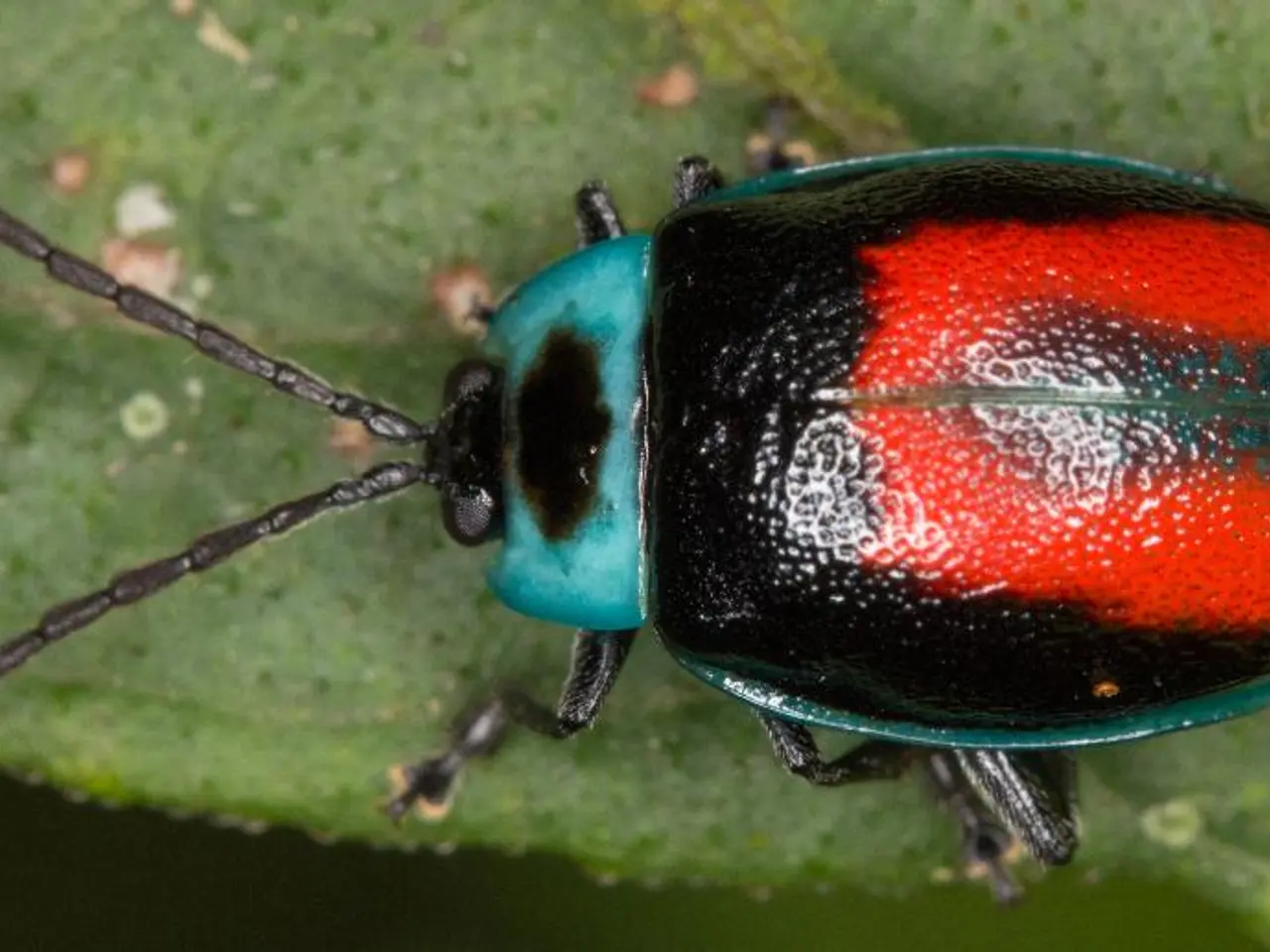Home Management Strategies to Combat Colorado Potato Beetles in Personal Vegetable Patches
In the battle against the Colorado potato beetle, a notorious pest that can wreak havoc on potato crops, home gardeners have multiple options to keep these oval, convex insects at bay.
Mechanical / Physical Controls
One of the most straightforward methods is handpicking. Daily patrols to remove adults, larvae, and egg masses, followed by disposing them in soapy water, are effective for small infestations. For added efficiency, consider using floating row covers to prevent adult beetles from laying eggs on plants. Mulching with thick straw and using plastic-lined trench traps at garden edges can also help reduce beetle movement.
Cultural Controls
Crop rotation is key to disrupting the Colorado potato beetle life cycle. Avoid planting potatoes or other host plants from the nightshade family in the same location for at least two years. Planting early-maturing potato varieties (maturity ≤ 80 days) allows for harvest before peak beetle activity. Removing weeds and alternate hosts like nightshade and ground cherry that harbor beetles is also beneficial. Companion planting with repellent herbs such as catnip, tansy, or nasturtium may offer additional protection.
Biological Controls
Encouraging natural predators like ground beetles, ladybugs, parasitic wasps, and stink bugs that feed on beetles and larvae can be an effective strategy. Additionally, using microbial insecticides like Beauveria bassiana (a pathogenic fungus) and Bacillus thuringiensis var. tenebrionis (Bt), which selectively kill young larvae, can provide a biological solution.
Biorational and Alternative Insecticides
Products containing spinosad, such as the "Colorado Potato Beetle Beater" concentrate, are approved for organic gardening and provide effective control by targeting the beetles. Bt formulations targeting beetle larvae are safe and effective biorational options.
Timing is crucial for effective insecticide application, with small larvae being easier to control. Complete and thorough coverage of infested plants is necessary for good control. However, it's essential to alternate chemical classes to delay resistance development.
Removing overwintering Colorado potato beetles that appear on young plants in the spring is important for control. When larvae have grown to one-half inch in length, they burrow into the soil to transform into new adults. Insecticide treatment is critical for Colorado potato beetle control at this stage.
Larvae of Colorado potato beetles often feed in groups, causing isolated severe defoliation. Daily monitoring to smash egg clusters or remove larvae improves efficiency, and using floating row covers can offer preventive protection earlier in the season.
The first-choice products are synthetic pyrethroids such as permethrin, cyfluthrin, and esfenvalerate. However, the Colorado potato beetle may be resistant to many insecticides, including Sevin and malathion. Hand picking Colorado potato beetles is practical for a few insects on a few plants but impractical for larger gardens and fields.
By combining handpicking with cultural practices and applying biological or spinosad-based insecticides early in the season, home gardeners can maximize control while minimizing chemical use and environmental impact.
- Home gardeners can control Colorado potato beetles by employing daily handpicking, disposing the removed insects in soapy water, and considering floating row covers for additional protection.
- Besides handpicking, mulching with thick straw and using plastic-lined trench traps can help reduce Colorado potato beetle movement.
- Crop rotation is a crucial cultural control to disrupt the Colorado potato beetle life cycle, with avoiding potato or other host plant repeated planting in the same location for at least two years being key.
- Encouraging natural predators like ground beetles, ladybugs, and stink bugs, along with using microbial insecticides such as Beauveria bassiana and Bacillus thuringiensis var. tenebrionis, can be an effective biological strategy for managing Colorado potato beetles.
- By incorporating spinosad-based insecticides, such as the "Colorado Potato Beetle Beater" concentrate, into lifestyle choices for home-and-garden activities, home gardeners can effectively control these insects while advocating for reduced chemical use and environmental impact.





